How to type 3x faster
How I’ve built a tool that increased my typing speed 3x, changed how I plan projects, and helped me develop a growth mindset.
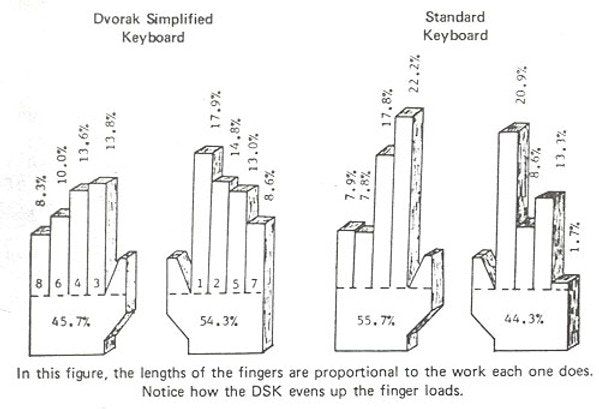
In the last post, I’ve explained how the speed of symbol manipulation augments our intellect. Today, I will describe an interface I’ve designed that increased my typing speed 3x, changed how I plan projects, and helped me develop a growth mindset.
Here’s what’s coming:
- How QWERTY was invented
- Why Dvorak keyboard failed despite being more efficient
- The sausage theory of innovation
- How to type 3x faster
- How shortcuts help to discover new knowledge, plan projects in minutes and develop a growth mindset
- What comes after shortcuts
You can find references at the end of the post.
I hope you’ll enjoy your reading.
How QWERTY was invented
Most people type one symbol at a time.
That’s because our keyboard is designed that way. No matter how much time you spend in the gym, weightlifting your left thumb, there’s an apparent speed limit beyond which you can’t go. You’ve only got ten fingers.
But very few people know why the keyboard is designed that way. And if we want to go beyond the speed of the keyboard, we need to first understand how we ended up here.
So let’s travel back in time.

On July 1, 1874, the first typewriter hit the market.
You’re probably now scratching the back of your head and thinking:
“Well, I’ve seen this keyboard somewhere..”
That’s right. The very first “Type-Writer,” designed by Christopher Sholes 146 years ago, used the exact same QWERTY keyboard that‘s in front of you.
Here’s how it worked.
His machine had a mechanism with characters at the end of a bar. When a key was struck, a linkage would swing the bar into a tape coated with ink. And when the character hit the tape, the impression of the character was transferred onto the paper.
The problem was that bars were colliding with each other and jamming. That’s why Christopher arranged the keys with the most common letters in hard to reach spots. He decided to slow typists down to prevent bars from jamming.
But that’s excusable. Christopher couldn’t have imagined one-third of humankind using his invention every day for hours. He lived 150 years ago when typing was not even a skill because typewriters didn’t exist.
And for the next 68 years after the “Type-Writer” hit the market, nobody cared about the speed.
But then one American professor tried to go faster.
Why Dvorak keyboard failed despite being more efficient
By the 1930s, the typewriters started getting traction.
The Underwood typewriter was selling like hotcakes. They reached 5 million units sold by 1939, and that was just the beginning.
On May 12th, 1936, August Dvorak and his brother-in-law, William, submitted a patent for a better-designed keyboard that decreased typing errors, advanced typing speed, and lessened typist fatigue.
Here’s how it looked:
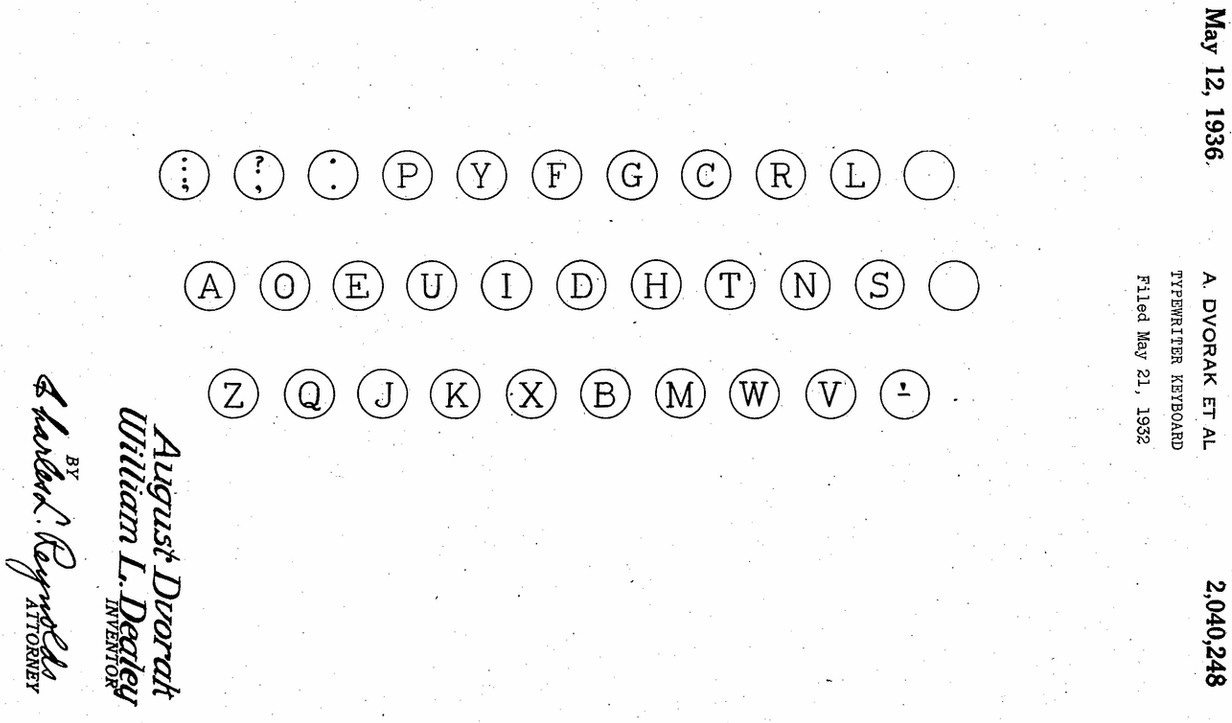
Their idea was to minimize the distance traveled by the fingers. To do that, August placed all the most commonly used letters in the home row—so that your fingers don’t have to move at all to hit these keys.
August and William also improved how vowels and consonants are located. They put all the vowels to be used by the left hand and made the right hand to manipulate only consonants. This enabled at least 2x speed improvement as there are very few words in the English language that can be typed with only one hand on the Dvorak keyboard (for the curious, the two are “papaya” and “opaque”).
Below you can see how much work each of the fingers does when typing on Dvorak instead of QWERTY:

But Dvorak’s keyboard never took off.
The timing was terrible. Amid the Great Depression, most companies didn’t have the cash to buy new typewriters. And when World War II started, many typewriter plants shut down manufacturing of all typewriters—including ones with Dvorak layouts.
But the most important reason was psychological.
Despite Dvorak-trained typists getting banned from typing contests for “unfair advantage,” the QWERTY layout got deep into people’s minds as “normal.” And as soon as something gets “normal,” we forget why we do the thing in the first place.
I call it the sausage theory.
The sausage theory of innovation
Here’s how the story goes.
The daughter-in-law is cooking dinner. She’s got some sausages from the local grocery store and is ready to boil them. But as soon as she takes the first one to throw it into the pot, the husband’s mom shows up.
The mother pulls the sausage from the daughter’s hands, cuts it in half, and throws into the boiling pot.
The daughter is shocked.
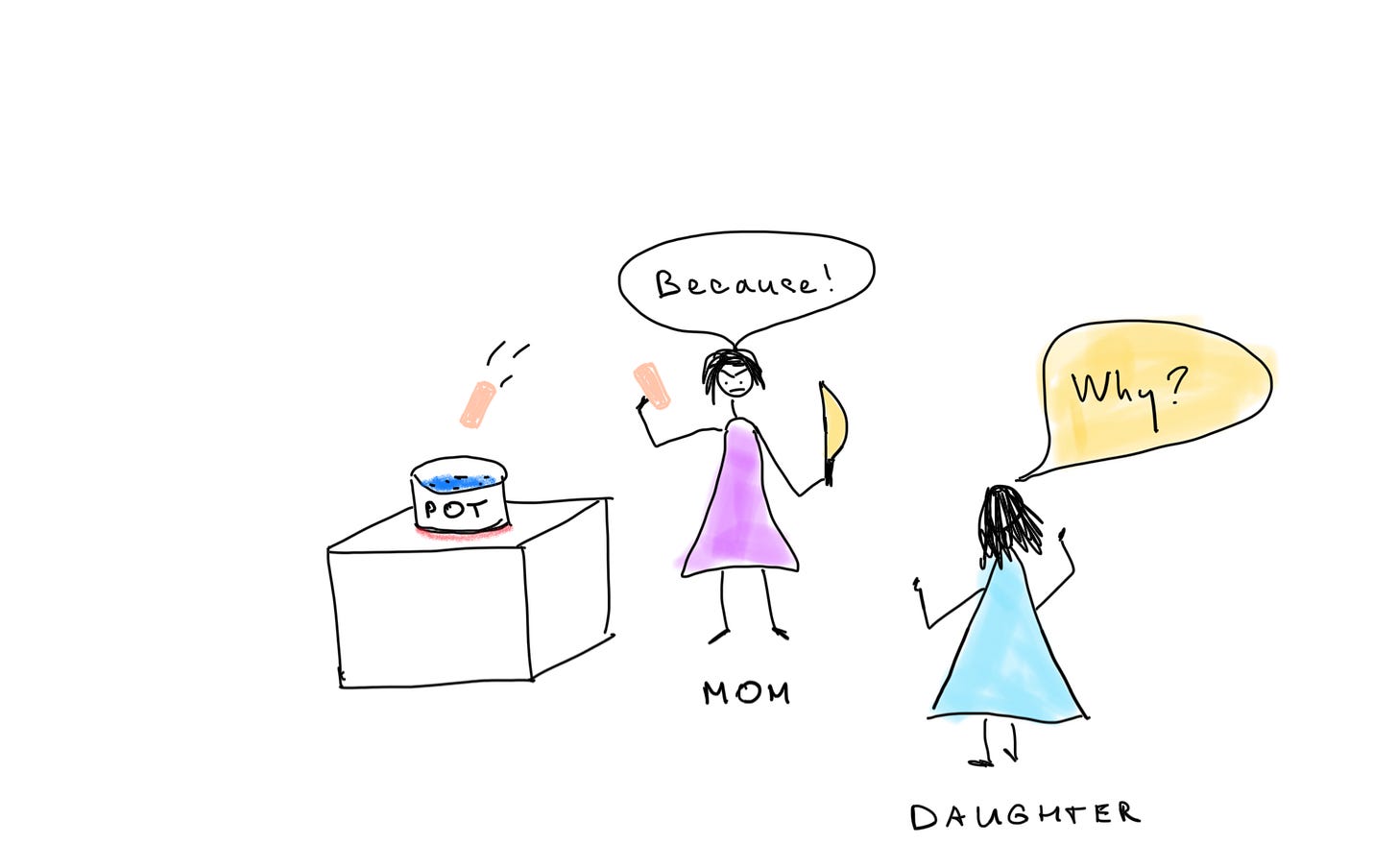
D: “Why are you doing this?”
M: “Because that’s how you cook sausages right.”
D: “Why so?”
M: “Because if you cut them in half, they end up being soft and juicy. And my mom has been doing that all the time, and she can’t be wrong.”
So the daughter goes to the grandma.

D: “Hey grandma, we were cooking some sausages last night, and mom started cutting them in half. I asked why and she said that’s because you’ve been doing that for years. What’s the point of cutting them in half??”
G: “Well, dear, that’s because how you cook sausages right.”
D: “Oh, really... Okay. And why is this the right way to cook them?”
G: “You know, if you cut them in half, they don’t end up being dry and tough to bite. But as I remember, my mom has been doing that for decades, so I just picked it up from her. Mom can’t be wrong.”
To discover the ultimate why, the daughter goes to the grand-grandmother, a 103-year-old woman living hundreds of miles away from the town.

D: “Hey granny, we were doing sausages for dinner, and mom started cutting them in half. I’ve asked what’s the point, but she doesn’t know, and even your daughter said that she picked it up from you. WHY IN THE HELL DID YOU CUT SAUSAGES IN HALF???”
GG: “Oh honey, are you still doing that? I had to cut them in half because they didn’t fit in my tiny pot…”
How to type 3x faster
The first typewriter had only one symbol per key because of its mechanical nature. You couldn’t program it to type one word, a combination of words, or an entire sentence for one press of a key. It had to be universal so that everybody could type what they want.
In other words, the pot was tiny.
But 146 years later, we are still cutting sausages in half.
The way to type faster is not to increase the typing speed but to rethink what typing actually is.
Here’s a demo of myself outlining this article:

If your email client doesn’t support GIF, click on the image, and it will open in your browser.
40 words; 23 seconds in total. I don’t know if you noticed but I actually stopped for a second to sip my coffee.
Without shortcuts, it took me 62 seconds to type the same 40 words:

My method is built on two principles:
- You can’t go fast by typing one symbol at a time
- Most words you type are exactly the same
You can 3x your typing speed if you set up shortcuts for most frequently used words to decrease the number of symbols you have to type.
Here’s how it works on Mac OS or iOS. When you type a symbol, i.e., “rr” or “wd,” and press a space bar, the system transforms your input into “remember” or “would be” accordingly. You can set up these pairs in Settings/Keyboard/Text Replacement.
But it’s not only the speed that matters:
- Shortcuts work on your iPhone. As you spend 2-4h a day with your iPhone and type at least a few times slower, it’s useful to have shortcuts to speed up your input process.
- Shortcuts take care of apostrophes. You can have a “dont” shortcut that turns into “don’t.” This removes the necessity to press the apostrophe key at all.
- Shortcuts prevent typos. Typos come from the word type, which means pressing keys one after another. When you do shortcuts, you don’t type. And if you don’t type, then you don’t have typos.
- Shortcuts simplify blind typing. Getting all eleven symbols of the word “progressive” right when staring at a screen requires deliberate practice and exceptional motor skills. But if you type two symbols, “pg,” instead of eleven, you will make fewer errors.
- Shortcuts let you instantly look up relevant information. If you have an iPad with a keyboard, you can look up stuff from Notes and other apps by pressing Cmd+Space and hitting your shortcut. Here’s how it works:
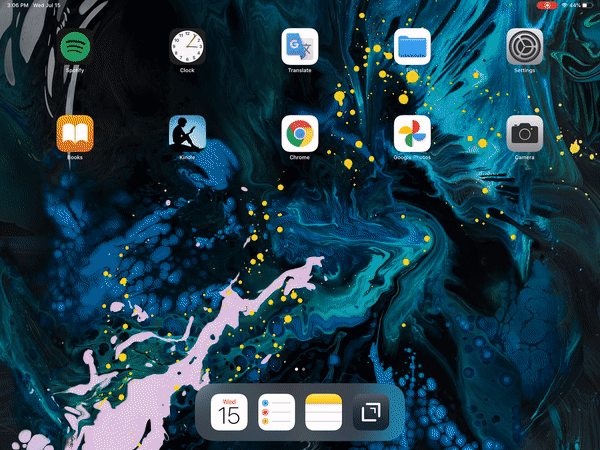
- Shortcuts speed up your handwriting. When you start using shortcuts extensively, you’ll notice that you also use them in handwriting. This happens because you remember the meaning behind the symbol. And as handwriting is even slower than typing on a 146-year-old keyboard, this yields enormous speed benefits compared to scribbling full words and sentences.
- Shortcuts speed up your thinking. Inevitably, you will start thinking in shortcuts as well. Thoughts such as “Can I TTS this OL?” (“Can I use my three three screens writing method for this essay outline?”) begin to pop up.
I can speculate that after three years of using shortcuts every single day for 5-10 hours, my thought process became significantly faster. That’s not only because of smaller symbols but also because shortcuts compress knowledge. They serve as dynamic pointers to the territory in my brain where the meaning is stored.
This means that I’m climbing up the ladder of information just like a chess player does when he progresses from being an amateur to a grandmaster.
The between the two is that an amateur calculates moves of individual figures on the board, and the grandmaster can play blind chess with ten people because he operates different information units. The grandmaster thinks not only in combinations and positions but even in entire games.
Here’s how to integrate shortcuts into your workflow:
- Go bottoms-up. Don’t just download 300 most popular English words but make shortcuts based on your unique needs. This means,
- Look for big words. You must become the Sherlock of your own typing. Whenever you catch a big word that you type often, go ahead and set up a shortcut for it. The bigger the word, the more benefit you get. For example, you can take the word “progressive” and turn it into a “pg” shortcut. This reduces the number of symbols you need to type 5x and removes any possibility of typos.
- Look for complex words. Anything that requires special symbols, capital letters, or apostrophes must be turned into shortcuts. For example, I have “ive” shortcut for “I’ve” and type two symbols less each time I get to write this word.
- Design shortcuts with ergonomics in mind. You must make them as convenient as possible to get really fast. Thus, for a two-symbol shortcut, you need two symbols in different parts of the keyboard. This enables typing the shortcut with two or three different fingers instead of one.
- Use the first two letters of the word to make shortcuts easy to remember. The first and last letter will do as well. But if you set up a shortcut that doesn’t make sense to you, you won’t remember it. And shortcuts only help if you use them. For example, I have “ab” for “about” and “rd” for “realized.” For word combos, use first letters of both words; for example, I have a “fe” shortcut that transforms into “for example” and “ac” shortcut that becomes “auto compound” after I hit the space bar.
- Design different variations of a shortcut for the same word. When you start typing three times faster, you will inevitably face a system not picking up keys in the right order. Therefore, it’s useful to have different variations of the same shortcut for the same word. For example, I have both “dnt” and “dont” expanding into “don’t.”
But shortcuts not only let you improve typing. They change how you think.
How shortcuts help to think new thoughts
Imagine that you are a world-class neurosurgeon who needs to fix something in his own brain. No matter how good you are, you wouldn’t want to cut your own head, would you?

Analyzing your thoughts without writing them down is like doing surgery on your own brain. You’re not designed to do that. You need to fixate your thoughts in space and time to be able to reason about them.
To analyze your thoughts in writing, you need to ask questions. But it’s hard to come up with the right questions when you need them most. By that point, you need to have already thought.
Shortcuts reduce the cognitive load of pulling out the right information at the right time. And they’re easy to recall because short things get remembered better (this is called the Zipf’s law; that’s why we have NBA, UK, and the US).
Mastering shortcuts and writing down your thoughts to analyze them is like inviting a surgeon-buddy to fix your head. This leads to discovering new knowledge, better planning skills, and developing a growth mindset.
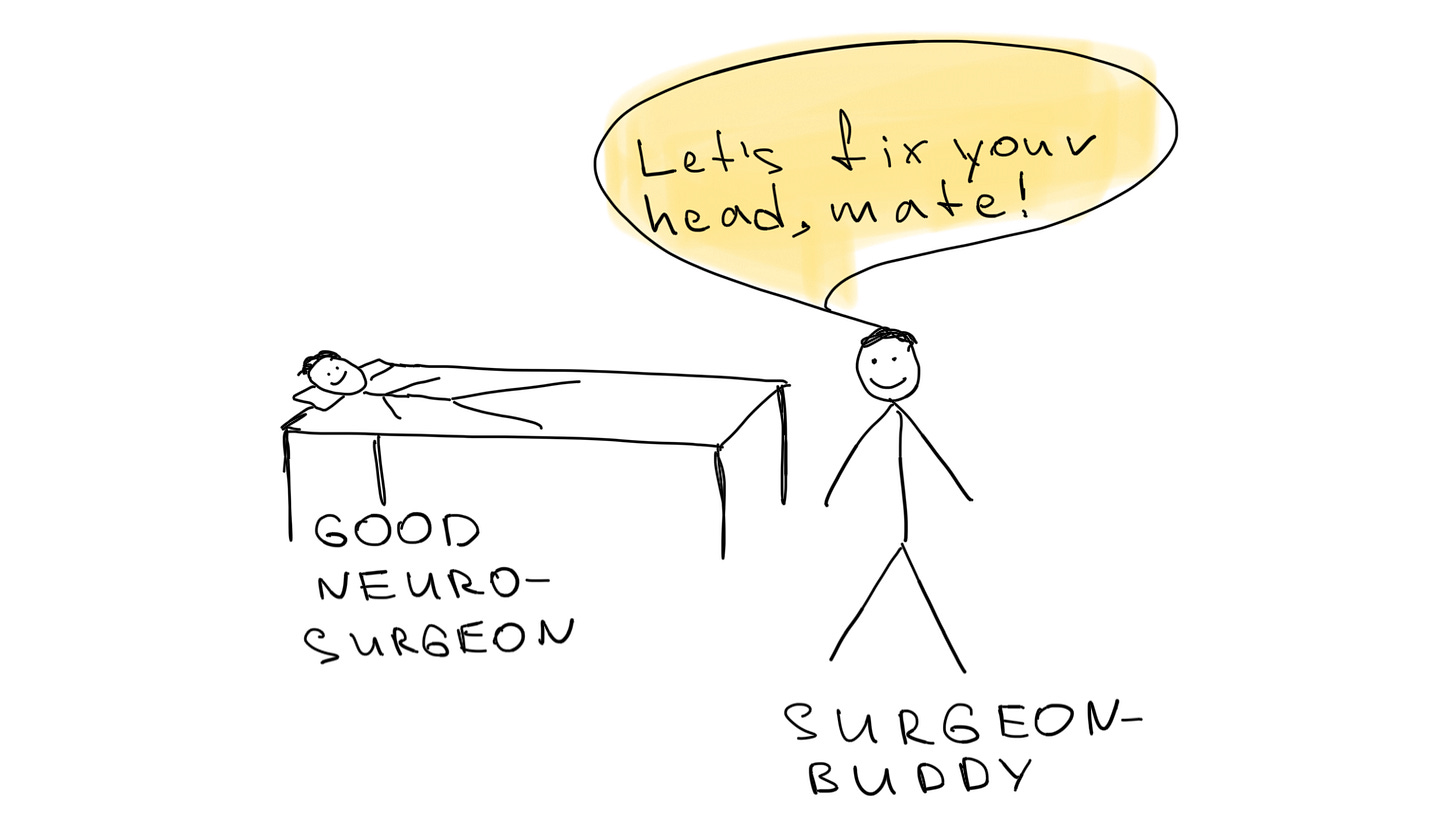
Shortcuts help to discover new knowledge
Let’s say you’re wandering down the street and see an ad that catches your attention. The ad says there’s this new Italian place around the corner so please come by and have some Italian stuff.
If you’re into ads, then you want to save this one for reference. You take a picture of it, write a short note, and put it in some “nice ads” folder.
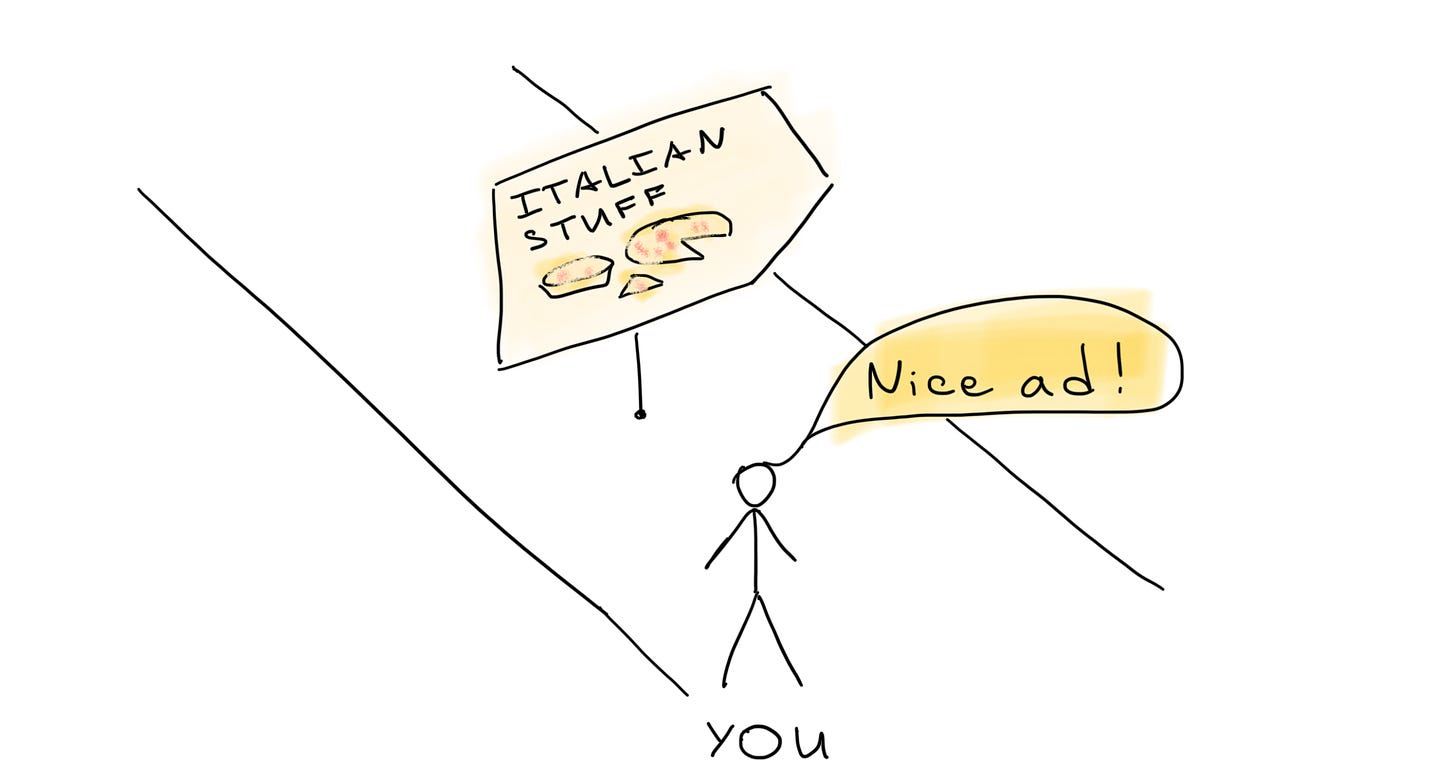
Most people stop here.
They miss the most critical part of the knowledge discovery process; to identify the principle behind the fact.
In the ad story, the principle might be that ads that combine well-known countries with foods that people associate with these countries perform better than other ads. People have implicit memories (this means acquired without proactive thought) about these places or metaphors that connect to them.
For example, if the country of choice is France, then the ad might be “the crispy french croissant with almond cream,”; and if it’s Italy, then we get “freshly baked Italian pizza with mozzarella and tomatoes.”
And if you have a “wp” shortcut that transforms into a question “what’s the principle behind this?” then you’re more likely to start thinking about these things because it takes you no time to present yourself with a question.
Here are some shortcut-question pairs to consider for developing knowledge:
- “Wf”—“What’s the function behind the form?”
- “Wp”—“What’s the principle behind this?”
- “Ws”—“Why so?”
- “Hs”—“How so?”
These are just my configurations; feel free to customize.
Shortcuts help to plan projects in minutes
Planning is more important than execution because it defines what to do. If you have a set of shortcut-question pairs for planning, you instantly process inputs from the world and turn them into actions.
Let’s say a new project idea comes in.
If you have shortcuts, then you can quickly create a note on your phone and plan the project on the go instead of carving out time slots on your calendar to sit down and think through these things.
As work expands to fill all the time available for its completion, this becomes a useful habit that immediately yields two-minute actions that help you discover invaluable information to get the thing done faster.
Here’s a list of useful shortcuts for rapid project planning on the go:
- “Pe”—“Purpose - “
- “Se”—“Successful outcome - “
- “Na”—“Next actions - “
Shortcuts help to develop a growth mindset
Any outlier success is a byproduct of work hours.
That’s just how it is; you can’t achieve abnormal results by doing normal things.
But very few people have actually thought what drives outliers to work so hard. I believe it’s because most of these people have what they call a growth mindset. They always look for an opportunity to improve instead of being fixed on what they’ve got. They don’t blame everybody and his brother for their misfortunes but take action to become better.
But the most interesting question of all is how to develop a growth mindset. You can’t just think, “oh, I want this growth mindset thing” and get it right then and there. If this were true, then motivational coaches would already rule the world.
The way to develop a growth mindset is to design a system that helps you become more analytical. To create tools that change how you think.
Shortcuts help here again. You can design shortcuts that let you analyze situations on the fly, reflect on them, and improve your ability to improve.
For example, when you feel bad, you can open a note and ask yourself the right questions that you’ve already thought of before. This simple behavior lets you analyze the situation and collects precious data (i.e., “what were the triggers of this breakdown” or “why am I feeling this way”).
Here are some ideas for reflection shortcuts that I use:
- “wam”—“Why am I feeling this way?”
- “wwl”—“What went well?”
- “wcb”—What could have gone better?
- “wbm”—What might I need to learn, or what strategies might I use the next time to get better results?
Note that all of them begin with “w”; that’s how I make them easy to remember.
What comes after shortcuts
In 1962, Doug Engelbart had an idea of a process hierarchy.
He thought that every activity that we perform consists of several physical steps to be taken. For example, the process hierarchy of sending an email consists of thinking about the topic, drafting ideas on paper, writing the actual email copy, and sending it to the right person.
Doug believed that if you augment one step of the process hierarchy, then it changes many different things—and often in ways you couldn’t have imagined because of the second-order effects (this means a change that is caused by a change).
Symbol manipulation is a fundamental activity. It’s a part of hundreds of process hierarchies from drafting thoughts about a new project to reflecting on how you feel. Thus, a small change in introducing shortcuts yields enormous outcomes in all areas where symbol manipulation is present (or might be present).
There are useful things you can do in writing that you don’t do because it takes too much effort to remember all of them or to type them. That’s why 3x speed is only the tip of the iceberg.
Think of shortcuts as a tool. As there’s no best hammer but a skilled carpenter, there are no best shortcuts as well.
The most valuable shortcuts for you will be the shortcuts that you will invent yourself.
P.s. If you’re curious to hear more on what’s next after keyboard, reply back. I’m tinkering with the depth of keys, length of presses, and different word type combinations to further improve this system.
- Typewriting Behavior by August Dvorak (ebook; many days to read)
- Doug Engelbart talking about process hierarchies and knowledge augmentation (video; forty minutes to watch)
- My ideas on the two-minute rule; doing a thing right then and there if it takes less than two minutes to do it (article; two minutes to read)
Now make yourself smarter.
If you answer the questions below, you will create new neurons in your head through neurogenesis. But if you don’t, you will forget about 80% of what you just read tomorrow.
Reading without thinking is wasting your time. Don’t waste time.
- What’s the point of the sausage theory of innovation?
- What are the two principles for improving the speed of typing?
- What’s the point of the mad neurosurgeon story?
- How come shortcuts help to discover new knowledge?
- How shortcuts lead to better project planning?
- How shortcuts help to develop a growth mindset?
Speed up,
Vasili